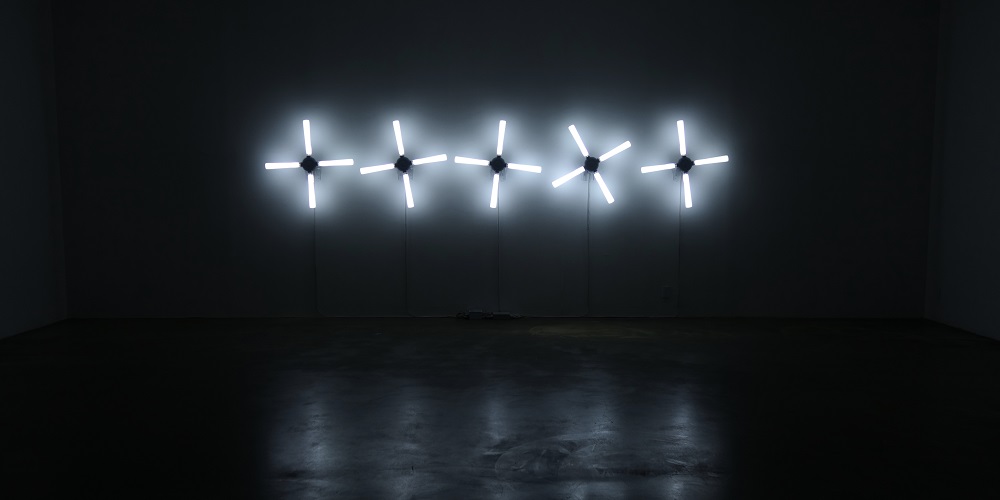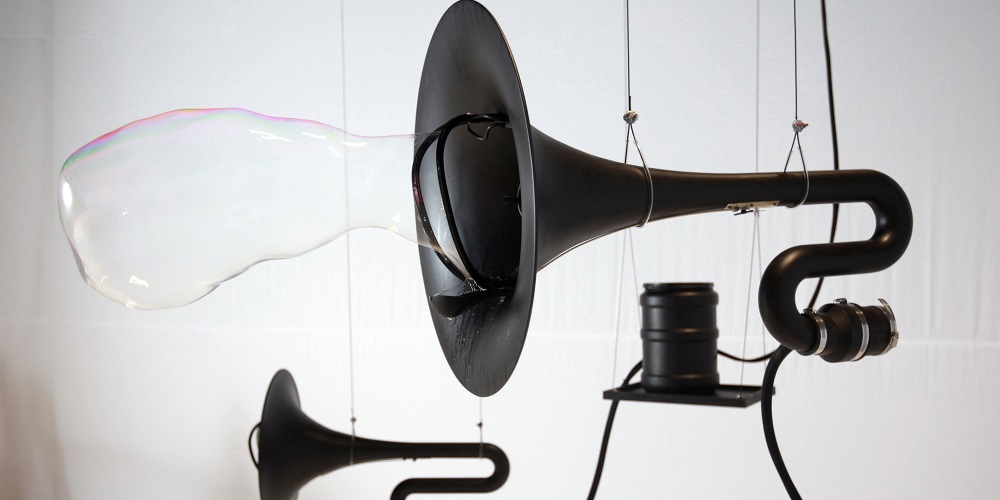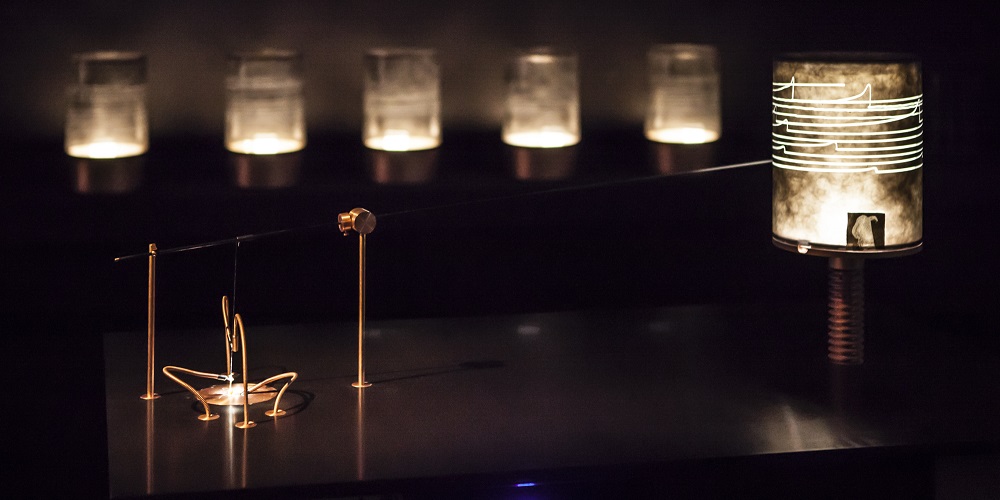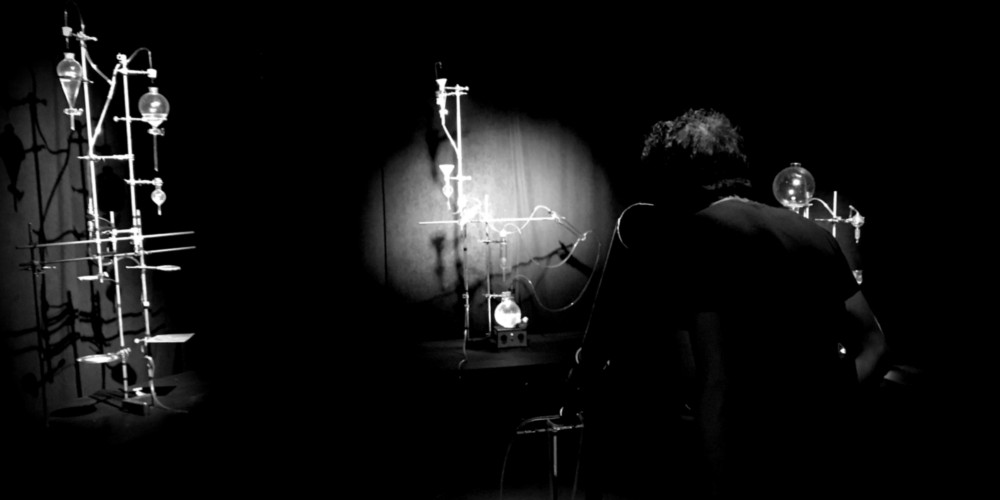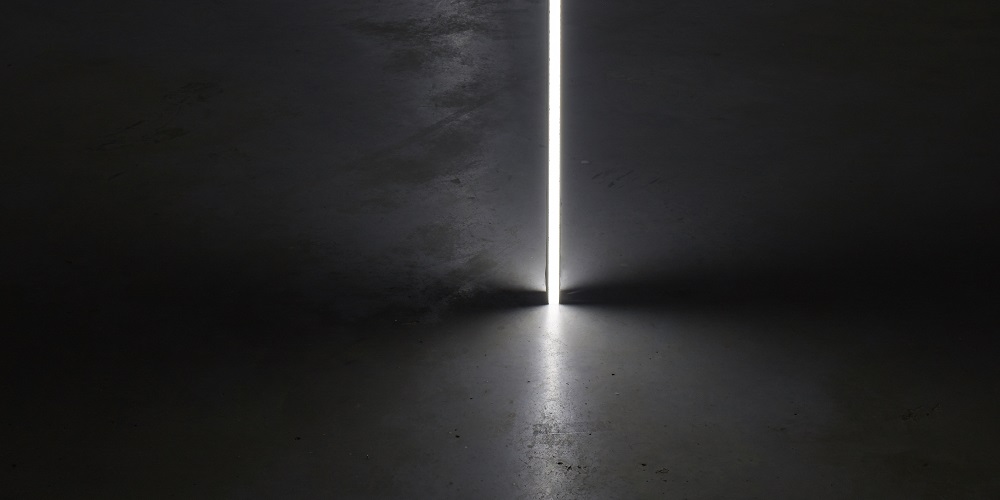
Deep in catacombs of POSTCITY, there’s a labyrinth of passageways, The Maze, a fallout shelter with room for 3,000 people, and a former storeroom for undeliverable parcels. These spaces—their extrovertedness, their aesthetics—evoke animated scenes in computer games. Now, the 2016 Ars Electronica Festival is using them as a setting for an intriguingly composed show of audiovisual works in which space is an essential magnitude.
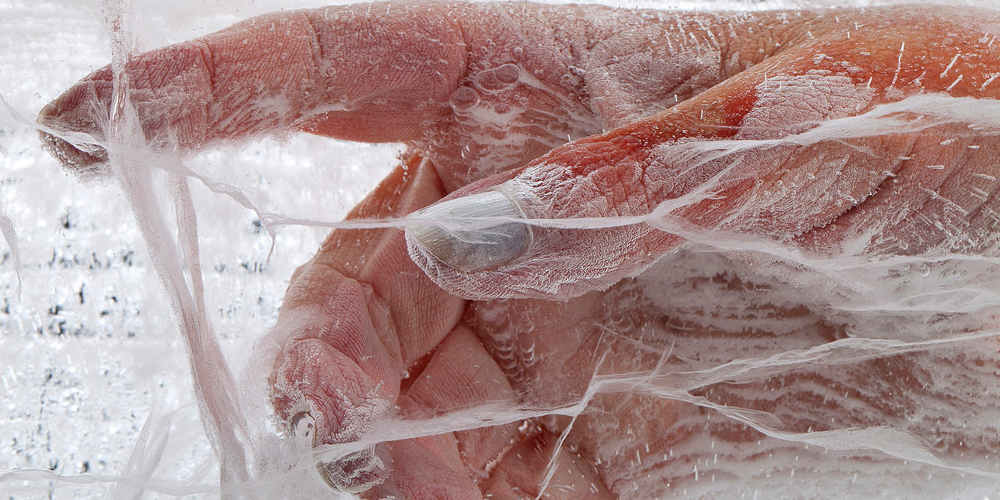
Dean Verzel
Anatomy of Frozen Genesis is an art project developed after a lengthy and complex process in 2011 in situ and in collaboration with the Institute of Anatomy at the Faculty of Medicine, University of Ljubljana. The final output was then documented by photo and video documentation of the technical and creative process.
Quadrature’s installation manifests the meaning of a Sisyphean task. The sole purpose of the machine is to maintain two large stones on a steel plate in perfect equilibrium. An endless succession of feedback effects and adjustments is necessary to prevent the incessantly threatening, imminent loss of balance.
Compared to the cosmic dimensions of time and space, a human life and human civilization come across as rather modest. Nevertheless, we tend to interpret findings in the field of astronomy from our limited point of view—for example, such momentous revelations as the fact that there are 40+ known planets on which water—and thus, life—could exist.
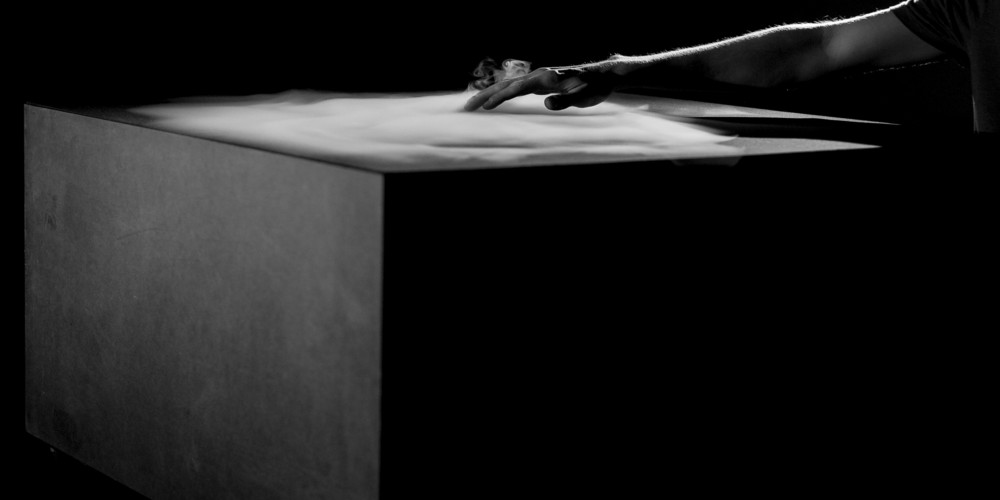
Michael Kugler, Sebastian Wolf
In the collaborative work Brume fog emerges from and self-organizes on the surface on a sculptural element, congealing with light into an elusive stratum. The installation utilizes a series of ultrasonic transducers that generate thick clouds of dense, yet extremely lightweight water vapor.
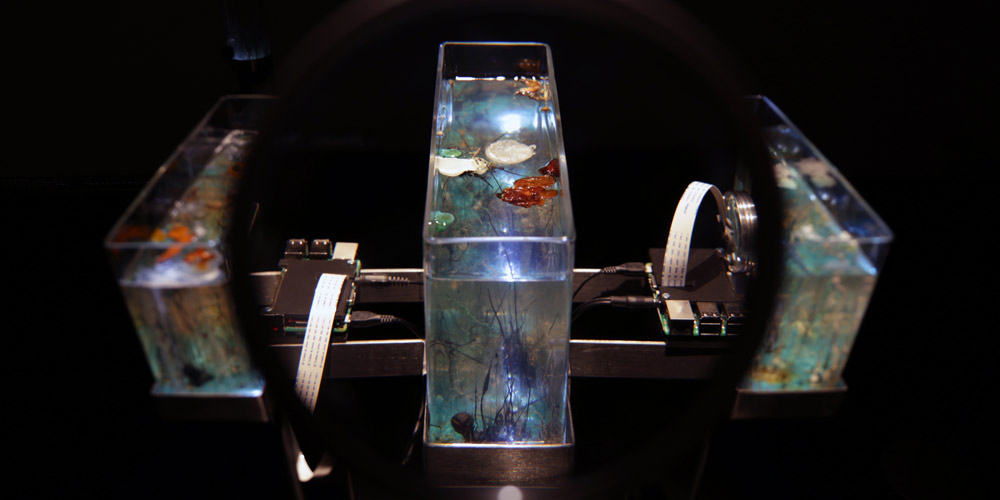
Time Displacement—Chemobrionic Garden explores a relationship between hydrothermal chemistry, the passage of time, and evolution of sound. The project consists of several small chemical garden formations in a water glass (sodium metasilicate) solution to provide an insight into research on chemical processes and the origin of life. The chemical reactions are monitored by cameras to detect changes in color and shape by means of microcontrollers. The changes affect the code for live sound generation, and slowly alter the generative drone composition pervading the gallery space.
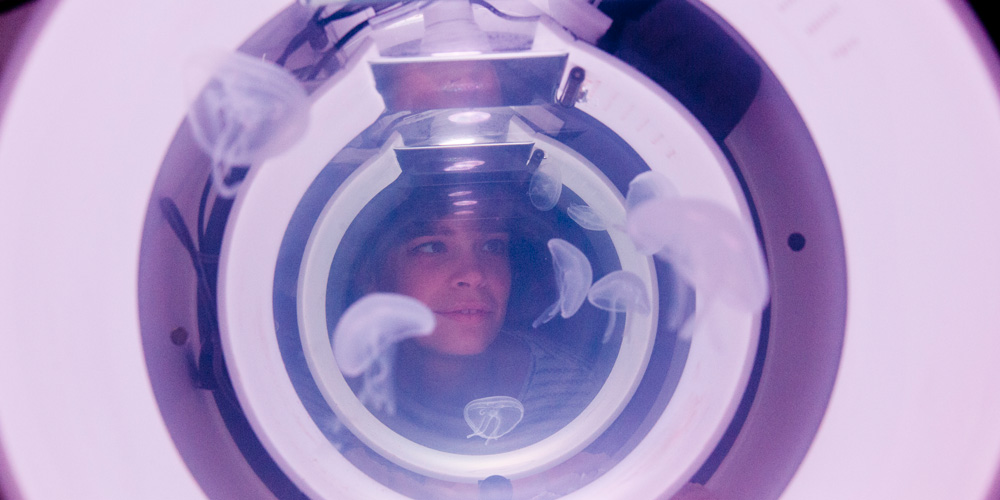
Aurelia 1 + Hz / Proto viva Sonification is an interactive performance that explores the phenomena of interspecies communication, sonification of the environment, and underwater acoustic/bioacoustics, using jellyfish. Jellyfish are one of the rare organisms that seem perfectly suited for the Anthropocene era. The current 6th Mass Extinction may not apply to them, in fact, their numbers are growing. It is not established (yet) how they communicate. Do they feel vibration? Aurelia aurita’s gravity receptors (calcium crystals) are the same as in the human inner ear.

